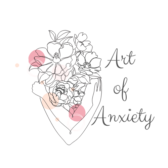Hyperarousal is a unique human experience that can be extremely overwhelming. This is one of the reasons why learning how to soothe hyperarousal is important.
In our busy, bustling world, navigating overstimulation can be a challenge. Hyperarousal can manifest in various forms, affecting individuals differently. For some, it might be a response to sensory overload, while for others, it could be a result of traumatic experiences or underlying mental health conditions.
Overstimulation can be a huge struggle for people diagnosed with anxiety and other related mental illnesses. It can make interacting with the world a challenge, especially if you develop Hyperarousal anxiety. But there are techniques that can help you to soothe this sensory overload.
What is Hyperarousal?

Hyperarousal is a state of high alert. In this state, we may feel like we’re in danger when we aren’t. It often occurs as a post-traumatic stress response.
When experiencing hyperarousal, we may notice intense emotions. Things like anger, panic, anxiety, feeling scared or startled and entering a state of hypervigilance.
During the state of autonomic hyperarousal, our nervous system becomes highly activated, reacting to stimuli in an intensified manner.
When sensitive people encounter situations or environments that overwhelm their senses. As a result, their body and mind may have a trauma response and enter a heightened state of alertness.
Who Experiences Hyperarousal?

If you’re a Highly Sensitive Person, you’ve likely experienced hyperarousal. But it’s also common for people with PTSD, anxiety, ADHD or if you fall on the autism spectrum. Empaths can also struggle with Hyperarousal, as can introverts.
That being said, Hyperarousal is not exclusive to a particular group or age range. It can affect individuals across the lifespan, from children to adults. This overstimulated state is most commonly triggered by everyday stressors and sensory overwhelm.
Let’s learn more about the symptoms and how to soothe Hyperarousal.
Hyperarousal Symptoms

The symptoms of hyperarousal differ for each person. We all have a unique experience in this world, and sensory overload is no exception. However, there are some hyperarousal symptoms that commonly arise.
When it comes to learning how to soothe hyperarousal, it’s important to understand why it’s happening and where it’s showing up in your body. Recognizing hyperarousal involves being attuned to a range of emotional, cognitive, and physical symptoms.
Heightened Alertness:
Individuals in a state of hyperarousal are often on high alert, scanning their environment for potential threats. Your adrenaline and cortisol are pumping, anxiety is high, and it can be really hard to focus on what’s right in front of you.
Irritability:
Increased sensitivity to stimuli can lead to irritability and a reduced tolerance for noise, light, or even minor inconveniences. You may squint your eyes and find a strong desire to seek quiet spaces.
Emotional Reactivity:
Strong emotional reactions, such as anger, anxiety, or panic, may arise more easily. You could feel snappy or short-tempered.
Rapid Heart Rate:
The body’s physiological response to hyperarousal can include an accelerated heart rate, contributing to feelings of unease. Your body might feel like you’re in danger, even in a relatively safe environment.

Muscle Tension:
Tensed muscles are common during hyperarousal, as the body prepares for a perceived threat. You also may notice your jaw tensing.
Difficulty Concentrating:
Heightened arousal can interfere with concentration and cognitive functioning. It can be hard to stay present in conversation or focus on anything happening around you.
Sleep Disturbances:
Falling asleep or staying asleep may become challenging for those experiencing hyperarousal. You may find yourself tossing from side to side or struggling to stick with your sleep schedule.
Hypervigilance:
Constant scanning for potential dangers can lead to hypervigilance, causing mental exhaustion. You may feel your eyes becoming fatigued or a headache developing from darting your eyes all over the place.
Managing Hyperarousal
When you’re in a state of hyperarousal, it might be hard to calm down and return to a regulated state.
If you struggle with overstimulation, learning to manage hyperarousal is essential for living in our world. The techniques and methods for soothing hyperarousal vary from person to person. As with most strategies for anxiety, it’s your job to find what works for you.
Learn how to soothe hyperarousal with these different strategies:
Grounding Techniques

Grounding is an excellent tool to bring you into the here and now. Techniques like mindfulness and various grounding exercises can anchor you in the present moment, reducing anxiety.
Try:
- Use your senses, notice:
5 things you can see
4 things you can touch
3 things you can hear
2 things you can smell
1 thing you can taste - Find a Grounding hobby like painting or pottery
- Use grounding phrases, e.g. I’m safe now
- Use sensory regulation techniques
Container

When things get too overwhelming, you might need to find a way to contain them. If you are being flooded by distressing thoughts, feelings, body sensations, memories etc, you can use a resource known as a “container”.
Try
Imagine a container of some sort. This could be a box, a bottle, a vault, a safe or a shipping container. Then imagine placing all of your distress inside and sealing it.
This technique doesn’t mean we are ignoring the past or our emotions. Rather, we put those thoughts and feelings aside until we can return to the container when we are ready.
Distraction

If you can’t escape the situation or are struggling to downregulate your nervous system, you might need to press the “reset” on the hyperarousal alarm by distracting yourself.
Try
- If you feel angry, go for a run or attend a boxing class
- If you feel panicked, focus your mind on an activity you love
- If you feel sad, try a calming exercise
- If you feel alone, reach out to someone you love or spend time with animals
- If you feel stressed, lose yourself in play
Name How You Are Feeling

When feelings and emotions become overwhelming, it can be useful to identify what you are feeling and understand what your emotions are trying to tell you.
Acknowledge how you are feeling and validate it. Then if you are comfortable, share those feelings with someone you trust.
Try
- Exploring what your feelings are telling you
- Journal about what you are feeling
- Give your feelings a color, shape, texture, consistency
- Using a feelings wheel
- Ask yourself “When *experience* happened, I felt *emotion*
Breathing Exercises

When we are in hyperarousal, we are in survival mode and will take short, sharp breaths. We need to activate our parasympathetic nervous system to enter a state of “rest and digest.” Deep, controlled breathing can help regulate the body’s response to stress and sensory overload.
Try:
- Deep belly breathing
- Breathing in through your nose for a count of 5 and out through your mouth/ nose for a count of 7
- Connect with yourself through yoga
- Trauma Release Exercises
- Progressive muscle relaxation
Connection

Relationships that are safe, nurturing and caring can help us calm and activate our parasympathetic nervous system. Never underestimate how powerful they are.
We are social creatures, even if you are an introvert. No matter who you are, as a human, deep, meaningful connection provides great comfort when we are in an overstimulated state.
Try
- Call a friend
- Plan a coffee date
- Attend an art class
- Join your family for a meal
- Go to a support group
- Head to a yoga class
Self Care

Never underestimate how important it is to look out for yourself. Prioritizing self-care practices like adequate sleep, a balanced diet, and regular exercise can contribute to emotional resilience.
Try
- Drink some water
- Create and maintain a sleep schedule
- Go for a spa day
- Do something you love
- Go for a walk (or try other forms of exercise or movement)
- Explore different types of self care
- Be mindful of alcohol, illicit substances and caffeine
- Take your medication
Finding Hyperarousal Treatment
If you experience extreme arousal and are struggling to manage it yourself, it might be time to find Hyperarousal treatment.
When learning how to soothe hyperarousal, it often requires a multifaceted approach that may involve self-help strategies, professional guidance, and a supportive network. It’s crucial to reach out for help when needed and explore treatment options that align with your unique needs and circumstances.
In some cases, soothing Hyperarousal will require professional support. Therapy, particularly techniques like cognitive-behavioral therapy (CBT) and eye movement desensitization and reprocessing (EMDR), can be beneficial for those with hyperarousal related to trauma.
In some cases, medication may be prescribed to manage symptoms. But you’ll need to have a consultation with a healthcare provider to ensure you have proper guidance.

Navigating Hyperarousal
Understanding hyperarousal is the first step in the journey toward managing and learning how to soothe hyperarousal. By acknowledging its presence, seeking support, and implementing effective coping strategies, individuals can navigate the storm of overstimulation and emerge on the other side with greater resilience and well-being.

Kathryn is the creator of Art of Anxiety. She was diagnosed with GAD and MDD at 16 and has been working every day to master the art of anxiety ever since. Her favorite things to do are aerial yoga and hanging out with her cats while reading a good book.




